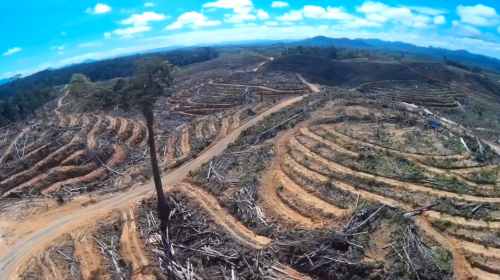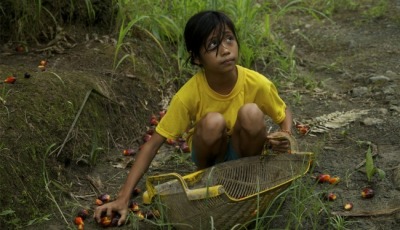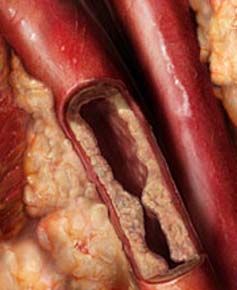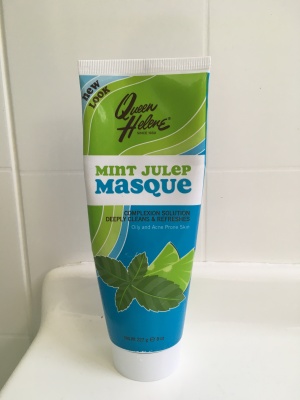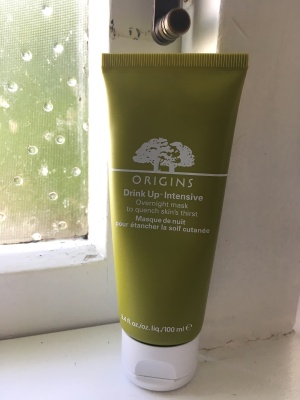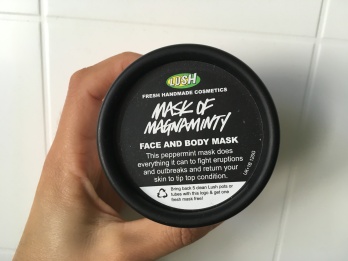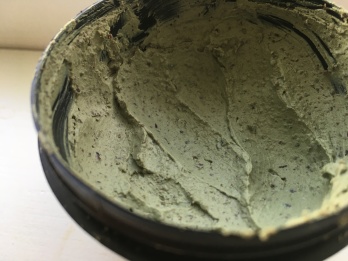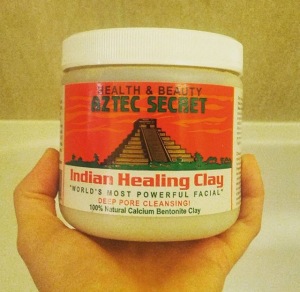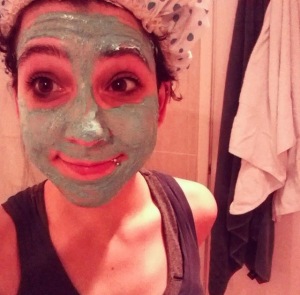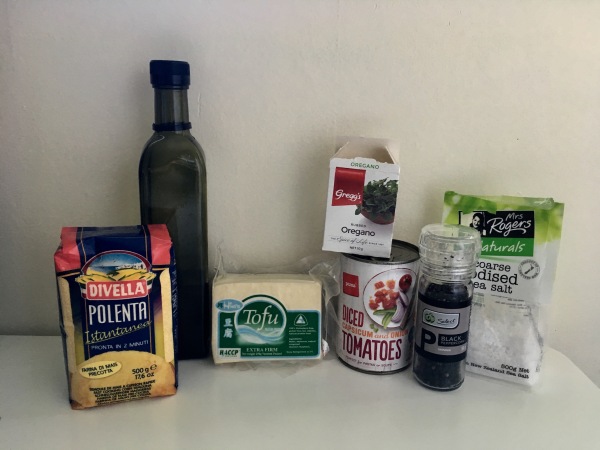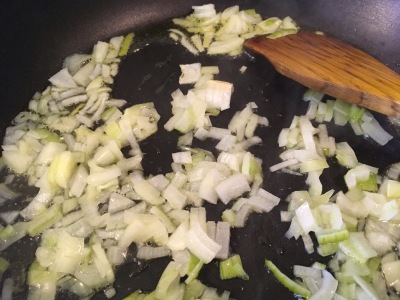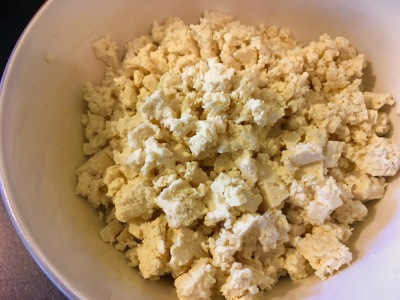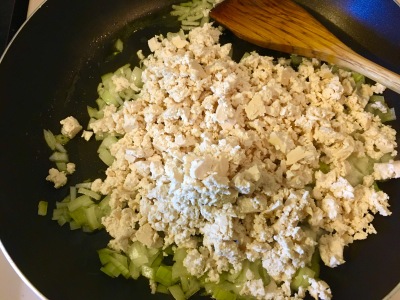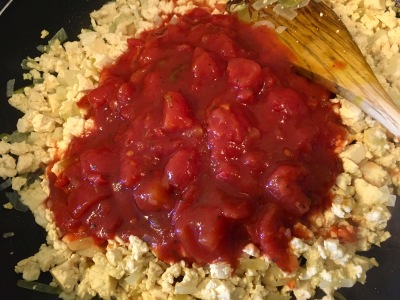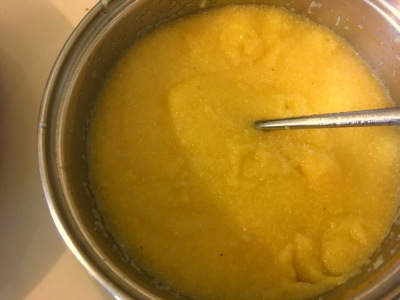Last week I watched The True Cost, a documentary about how the clothes we wear are made. I’ve been watching countless YouTube videos of people reviewing this documentary, particularly this and this by two ladies who I’ve been following for a while and whom I get inspired from when it comes to veganism, positive mental attitude, and a simple and happy lifestyle in general.
So I sat down with a pen and a notebook, watched The True Cost and took some notes.
I feel like I’ve always been vaguely aware of the Where Clothes Come From issue – as in, I’ve always known that my jeans and t-shirts were mostly sawn in some Third World country far away – but I’d never really given it too much thought. I remember going to the market on a Thursday morning over the summer holidays with my Mum, and rummaging through the piles of clothes she would always check whether they were made in Italy (that’s where we are from). But at the time I wasn’t buying my own clothes (I wasn’t buying any clothes to be honest – I was such a hobo in high school), so the problem didn’t really exist.
I first started to be interested in the fashion industry (HA! I should really re-phrase this. If you know me in real life you know I honestly don’t give a crap about fashion, what I mean is I started to be interested in where clothes come from) when I moved to London and I first set foot into one of the biggest high-street, low-cost shop chains: Primark.
Having lived on a budget since I started uni eleven years ago (WHAT) and throughout my Barely-Making-Enough-Money-For-Food career, I was used to purchasing my clothes at inexpensive high street shops like H&M, Forever21 etc. But Primark was a whole new level of cheapness: Sweaters for £5! Dresses for £10! Tees for £2!
After the first burst of excitement (I can be a student and afford shopping!), I quickly came to the realization that surely this couldn’t be sustainable. How could it be possible to buy a pair of jean shorts for £2 and have a clean conscience that whoever made those jeans was being paid a decent living wage? The answer of course is: it’s not possible.
After my first visit, I avoided Primark like the plague. Apart from the poor quality, unethically produced clothes, the shop itself was constantly crammed with people jumping on top of each other Boxing Day style, it was dirty and smelly, the queues for the fitting rooms were never ending, and overall no mentally sane human being would have wanted to spend more than five seconds in there.
Then in 2013 the Rana Plaza accident happened, and that’s when I first started to actively research where my clothes came from. I already knew about Primark, but I also started to look into those brands I would normally reach for when shopping: H&M, Zara, Forever21, Pull&Bear, Topshop (underwear only).
My overall reaction to finding out the unethical policy behind these fashion corporations was not really to stop buying clothes from them, but to stop buying clothes altogether. For the three years or so during which I was in London working but not making enough money to splurge on shopping, I would only get new clothes as and when I’d go home to Italy and my Mum actually offered to buy stuff for me. I eventually did get a job that allowed me to treat myself a little bit, but even then high street shops were all I could afford, and by then the Rana Plaza incident was already yesterday’s news. So I went back to buying from H&M etc.
Recently I’ve found myself being more and more interested in a whole bunch of environmental issues, from Zero Waste to sustainable food to, yep, how clothes are made. And I wish I’d made better choices in term of shopping even when I didn’t have that much money and cheap, fast fashion seemed the only option.
As The True Cost explains, in the US today only 3% of the clothes sold there are actually made in the US, as opposed to 95% of them back in the 1960s. Each year Americans buy 80 billion pieces of clothing, 400% more than two decades ago.
What’s happening today is that the price of clothes is going down, but the cost is going up. Fashion corporations have the power to dictate the price they want, and can switch among manufacturers until they find the one that agrees to match that price. In order to do so, of course they’ll have to cut on costs, which mainly means lowering employees’ wages.
People in Bangladesh, Malaysia and other developing countries who work in the clothing manufacturing industry have to endure inhuman working conditions: they operate in an unsafe environment, often with no safety features such as fire extinguishers or emergency exits; they are exposed to harmful chemicals that can cause from mental disabilities to cancer; women might find themselves forced to send their children away to live with some distant family in order for them to be provided with a proper education; and all of this while being paid a monthly salary that is way below the minimum wage.
People working in textile fields don’t have it any better. As Christina Dean points out:
Sixty one per cent of China’s groundwater is classified as ‘unfit’ for human contact by China’s Ministry of Environment; 190 million people in China fall ill and 60,000 people die every year from diseases caused by water pollution, of which the textile industry is a major contributor; and cancer rates are reported higher amongst people living near polluted rivers.
Cotton farmers in India also work with toxic pesticides and fertilisers, and face conditions so critical that taking their own lives often seems like the best option. It’s been estimated that the suicide rate among farmers is one every 30 minutes – the highest in history (ref.).
The cause of all this? Fast fashion.
We buy clothes like they are disposable products, thinking they’re going to last us for the coming season and then we are just going to throw them away.
Primark is the emblem of fast fashion. In fact, the very first time I heard about it was when I was studying in Edinburgh, and a friend of mine would regularly travel from there to Glasgow exclusively to visit Primark. She would explain that the clothes were so cheap she wouldn’t feel guilty throwing them away at the end of the season.
We tend to act this way because high street shops are constantly being replenished, so that every time we walk in we see something new and we are tempted to buy more than we need. In H&M, new clothes are coming in every week.
Do we have any idea how wasteful fast fashion is? In the US alone, 37 kg of textiles per person are thrown away every year. That’s 11.1 million tons of clothing that ends up in a landfill (ref.).
And if you’re thinking, Oh but I donate my clothes to charity – Think again. Only 10% of the clothes we donate get sold in thrift stores; the rest end up in landfills in developing countries, mainly because they are not considered good enough to go back in the stores to be sold (ref.).
(There’s also some good news: about 45% of discarded clothes from the US are shipped overseas, where demand for second hand clothes is very high. This helps create jobs for people who can open their own business selling these clothes, a much more affordable alternative to new clothes in developing countries. More good news: fast fashion actually means that we are donating more clothing then ever simply because they get over a trend. Every cloud has a silver lining after all.)
I’m not big on shopping, but I do have quite an extensive wardrobe. Although the majority of my clothes I’ve had forever (I still wear stuff that I’ve owned since high school), this is no excuse for what is in my closet now. After watching The True Cost I went through every single piece of clothing I own to check what was or wasn’t ethically produced, and this is the result.
Trousers
Total: 5 pairs
Ethical: 1 (second hand)
Unethical: 3
Not sure: 1
T-shirts
Total: 43
Ethical: 7
Unethical: 12
Not sure: 24
Sweaters
Total: 29
Ethical: 5, of which 2 handmade and 1 secondhand
Unethical: 15
Not sure: 9
Dresses
Total: 12
Ethical: None
Unethical: 9
Not sure: 3
Items not included: workout clothes, shorts, skirts, pyjamas, tank tops, underwear and stuff in the washing.
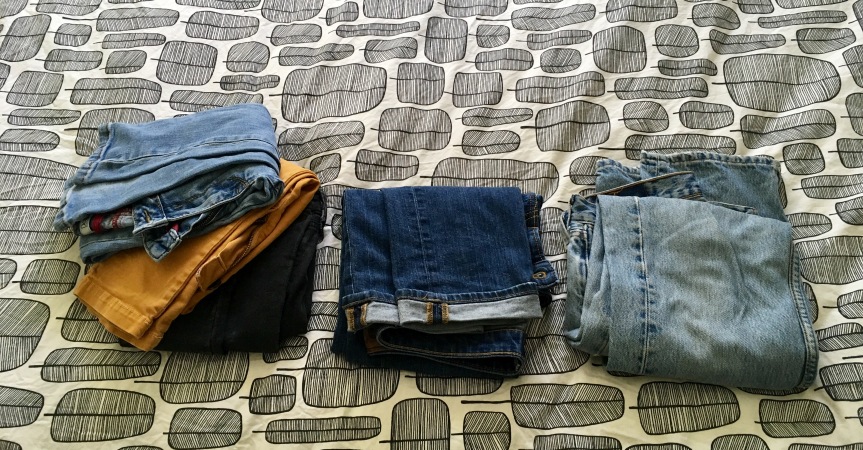
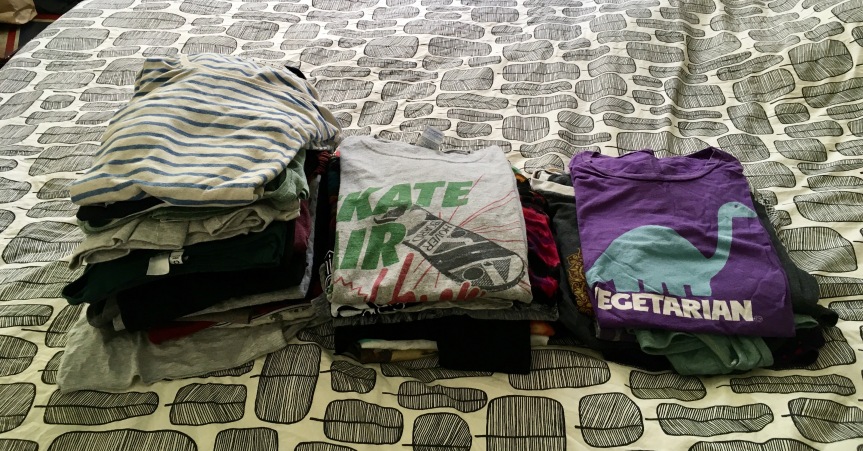

Conclusion: I suck (and I own way too many clothes). 39 pieces of clothing that I own have been unethically produced. That’s almost half of all the clothes I have (43.8% to be precise – yeah maths!).
I think what we need to understand here is that we as consumer have the power to steer the fashion industry towards a more humane and ethical way to manufacture textiles. The more we buy into fast fashion, the more we are part of the problem. We live in a consumerist world that constantly bombards us with consumption propaganda, and we base our purchase choices on materialistic values that make us believe owning things will make us happy.
But it’s about time we recognise the impact of our consumption. We are the consumers, and we are in charge. By refusing to support multinational corporations who don’t respect basic human rights and turning to ethical brands instead, we can make a change. Let’s buy fewer, more durable garments. Let’s recycle, up-cycle, buy local and second hand. Let’s make our clothes last, and let’s make sure we know where what we wear comes from.
These are some of my favourite ethical brands: Patagonia, Prana, American Apparel, Fat Face, People Tree.
And you may also want to check out these cool ladies who cooperated with the making of The True Cost: Stella McCartney, Livia Firth and Vandana Shiva.






